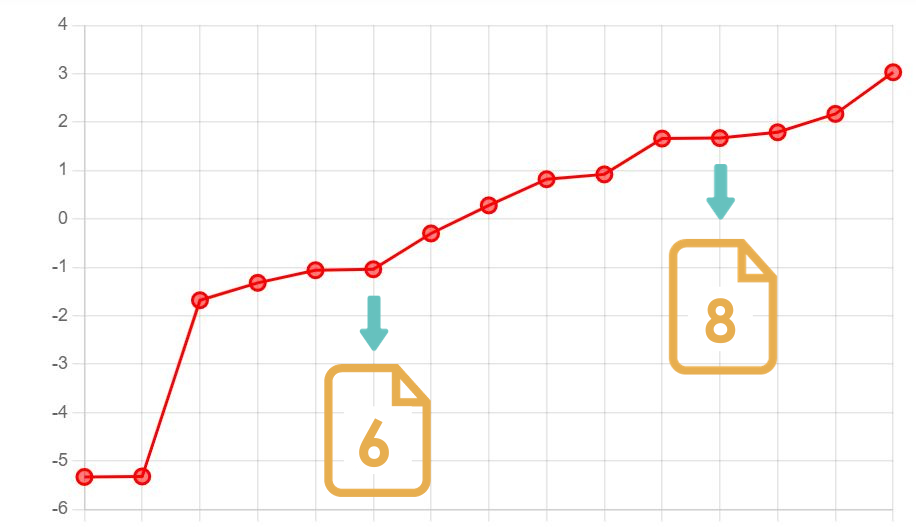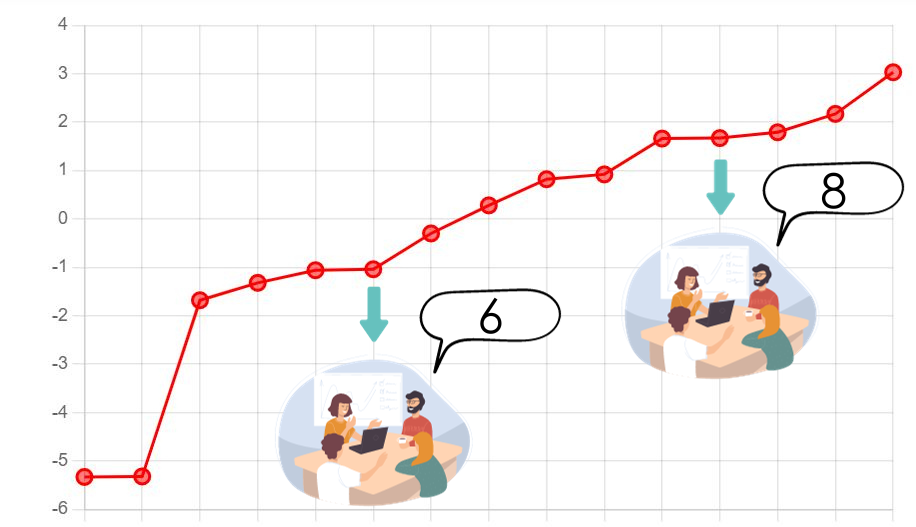
11 Dec From assessment to decision
After comparative judging, it is time to decide on the students’ final performance. We will make a judgment on whether the students have completed the assignment adequately. We might also give a grade. But how do you go from a rank to a fail/pass decision or a grade? In this article we explain how to go from assessment to decision.
Using benchmarks
The easiest way to get from ranking to grades is to use benchmarks. Benchmarks are works that have already received a grade. If you upload them into Comproved in advance, these works go into the comparisons. They eventually show up somewhere on the ranking.

In Comproved you can enter the grades of these benchmarks, and then the system grades the other works on the ranking as well. You can read exactly how this works here. Please note that the more certain you are of the grades of the benchmarks, the more certain you are of the grades the tool will eventually calculate for the other works on the ranking. So make sure that the benchmarks you choose have received a grade that has been calibrated with all teachers.
Setting the standard
In the example above, the pass grade is calculated based on the benchmarks. To determine the exact pass grade, you can choose to add your own sheet to the assessment with only the word “pass” on it. You can read how that works here. Because you are comparing with colleagues, you have determined the standard together. If you use the “pass” sheet in combination with benchmarks, you can make a choice about where the standard lies based on multiple sources.
Determining grades without benchmarks
With the introduction of comparative judgement, you may also have done a thorough revision of your assignment. This means that you cannot actually select benchmarks from previous years. In that case, it is necessary for the teaching team to choose two works from the ranking themselves and come to a grade together. You choose the works at about one-third and two-thirds of the ranking (this does not have to be very precise). Having used the “pass” sheet, you can also choose to give this sheet the pass grade after which you choose only one other work to discuss.

Having chosen the works, you can determine the grade of those works in several ways. The first way is by using a rubric. Each teacher fills out the rubric for the works and thus arrives at a grade. Then the teachers share the grades in a joint meeting, discussing differences between them to reach a final consensus.
In practice, on the contrary, you will (hopefully!) no longer have developed an entire rubric that has a scoring system attached to it, but rather a single-point rubric or criteria list that is used for formative purposes. In that case, the following approach will work:
1)Each teacher individually grades each work. Only then does he or she briefly write an argumentation for that grade. A 7 is the starting point. If there are mainly things that could have been done better, then the grade goes down. If there are things that went very well, the grade goes up. To avoid false accuracy, work with half points.
2)The teachers sit together. For each work, they first share the grade. If they agree, then they do not need to talk further. If they do not agree, then the teachers talk further based on the argumentation written down earlier to come to an agreement.
Experience with the latter method shows that teachers are generally already close to each other when they share their grades. After all, all teachers already have a good idea of the quality of the work because they have made comparisons beforehand. Having determined the grades, you can enter these grades into Comproved after which the tool calculates the rest of the grades.
Which data?
We are sometimes asked what information is included in the calculation of grades. Grades are only determined based on the ability scores of the ranking (i.e., comparisons made). Things like the time it took to make a comparison or any feedback given are not part of the calculation.
Do you have any specific questions about deciding? Don’t hesitate to ask your question!




